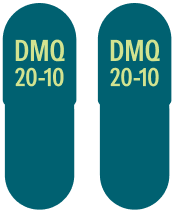

NUEDEXTA IS THE ONLY
FDA-approved
treatment proven to
reduce PBA episodes1
Pseudobulbar Affect (PBA) is a neurologic condition characterized by sudden, frequent, and uncontrollable crying and/or laughing, and it can be mistaken for depression. Clinically proven NUEDEXTA can make a difference1-3
Carol and Mary Beth, patients living with PBA
-
References:
1.
Nuedexta. Package insert. Otsuka America Pharmaceutical, Inc.; 2022.
-
2.
Brooks BR, Crumpacker D, Fellus J, Kantor D, Kaye RE. PRISM: a novel research tool to assess the prevalence of pseudobulbar affect symptoms across neurological conditions. PLoS One. 2013;8(8):e72232. doi:10.1371/
journal.pone.0072232 -
3.
Miller A, Pratt H, Schiffer RB. Pseudobulbar affect: the spectrum of clinical presentations, etiologies and treatments. Expert Rev Neurother. 2011;11(7):1077-1088. doi:10.1586/
ern.11.68 -
4.
Suavé WM. Recognizing and treating pseudobulbar affect. CNS Spectr. 2016;21(S1):34-44. doi:10.1017/ S1092852916000791
Copay savings card
Share this card with your patients to help them save on their NUEDEXTA prescription and refills.
10-day sample
Eligible healthcare providers can request a free 10-day sample of NUEDEXTA for appropriate patients.
~37%* of your patients with a primary neurologic condition
may be suffering from PBA2
46%*
OF PATIENTS WITH MULTIPLE SCLEROSIS2

52%*
OF PATIENTS WITH TRAUMATIC BRAIN INJURY2

29%*
OF PATIENTS WITH ALZHEIMER DISEASE2

Actor portrayals.
PBA also affects many patients with stroke, amyotrophic lateral sclerosis, and Parkinson’s disease. PBA is not limited to
these underlying conditions.2
*Based on the PRISM Registry including 5290 patients with stroke, amyotrophic lateral sclerosis, multiple sclerosis, traumatic brain injury, Alzheimer disease, and Parkinson’s disease. Patients with PBA symptoms were defined as having a CNS-LS score of ≥13.2
CNS-LS=Center for Neurologic Study-Lability Scale.2
Consider NUEDEXTA for your patients with PBA
NUEDEXTA is a combination of dextromethorphan HBr (20 mg) and quinidine sulfate (10 mg) in a capsule. It was proven to significantly reduce PBA episodes.1


Impact of PBA: suffering in silence
PBA episodes can cause immense distress, embarrassment, and confusion for patients.3,4
Jill, patient living with PBA

